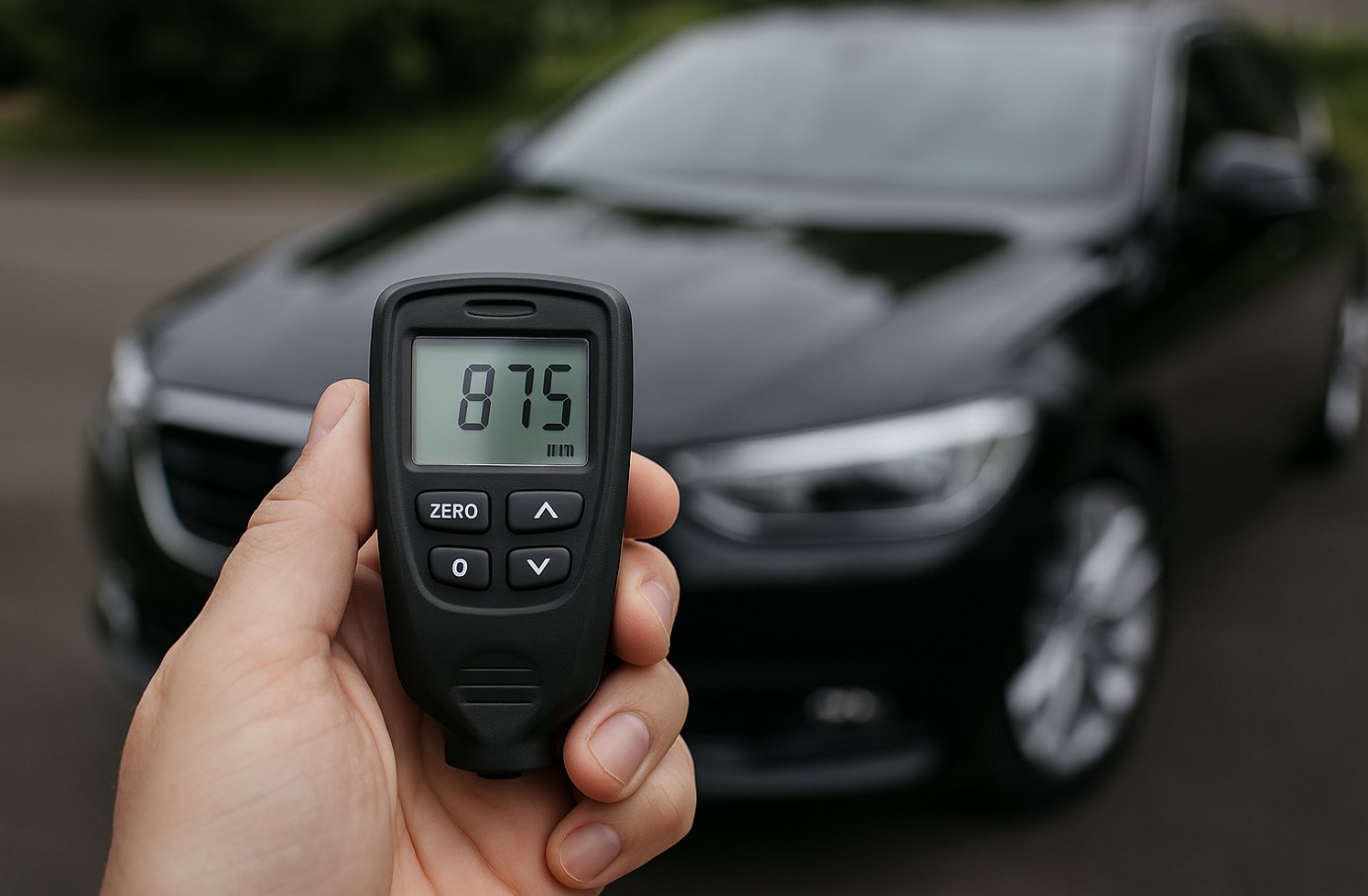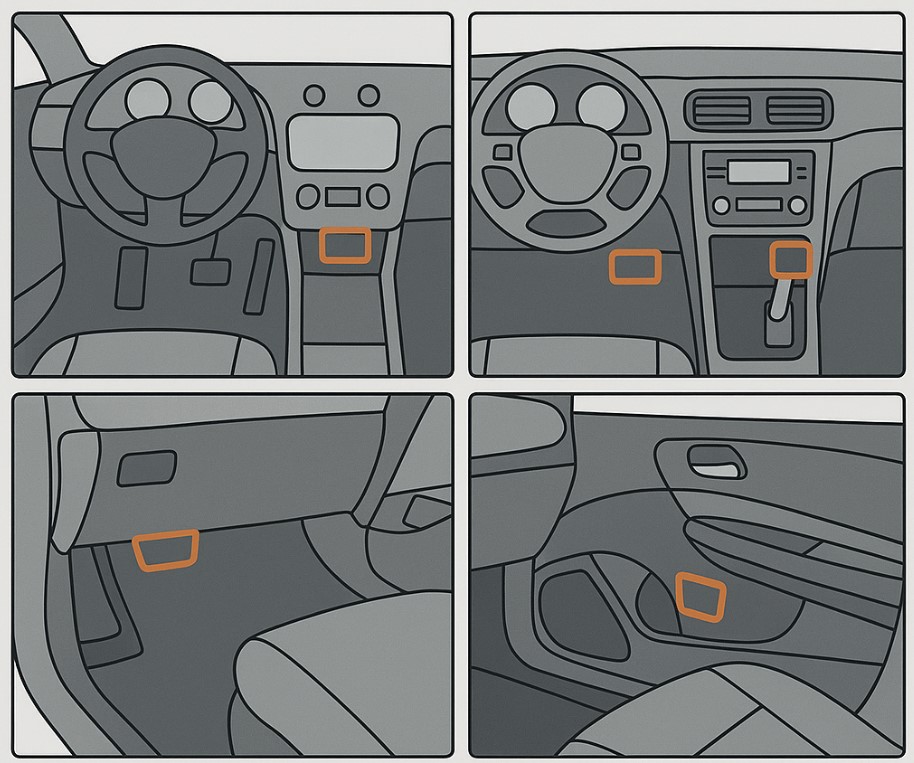 Paint thickness gauge: where to look for repairs
Paint thickness gauge: where to look for repairs
Introduction. Modern cars are packed with electronics, which opens new ways to assess their condition. A pre-purchase computer diagnostic means plugging a scanner into the OBD-II port to read faults and live data. People often call it simply “OBD diagnostics”. This helps uncover hidden engine/electrical issues, odometer tampering and more. Note: a fresh TÜV does not guarantee a clean ECU — the inspection mostly checks dashboard lamps and emissions. The computer provides codes and data; an experienced technician interprets them. At Sicher-Check we include a full electronic scan in our inspections across Germany (especially Berlin & Brandenburg).
What OBD is and how scanning works
All modern passenger cars have a standard OBD-II connector (EU: petrol since 2001, diesel since 2004). Through it a scanner reads data from control units: engine ECU first, but also transmission, ABS/ESP, airbag, climate, EPAS and more. The procedure is simple: locate the port (usually under the steering column), connect and read faults.
Interpretation takes experience: the same code can have different root causes. For instance, an oxygen sensor code isn’t always the sensor — it can be an intake air leak or wiring issue. Diagnostics is a team of tool + skilled diagnostician.
Important: to counter “sale preparation”, we scan twice — before and after the test drive — and check OBD Readiness monitors. If they’re “Not Ready”, memory was likely cleared recently.
How DTC codes are structured
Code structure: the letter shows the system (P — powertrain, B — body electronics, C — chassis, U — network). Second position: 0 — generic, 1 — manufacturer-specific. The rest describes the exact fault (e.g., P0301 — misfire cylinder 1; C0040 — front right wheel speed sensor circuit).
Sample DTCs — what they mean and where to start
| Code | System | Meaning | Check first |
|---|---|---|---|
| P0301 | Engine | Misfire, cylinder 1 | Spark plug/coil #1, compression, intake air leaks |
| P0171 | Engine | System too lean (bank 1) | Vacuum leak, MAF, fuel pressure, exhaust leaks |
| P0420 | Exhaust | Catalyst efficiency below threshold | Catalyst, downstream O2 sensors, exhaust leaks, software |
| U0100 | CAN network | Lost communication with ECM/PCM | ECU power/ground, CAN bus integrity, connectors/loom |
| C0040 | ABS/ESP | Wheel speed sensor (front right) | Sensor, ABS tone ring, wiring/connector, hub |
| B10xx | Airbag | Airbag/pretensioner fault | Clock spring, under-seat connectors, squibs, crash history |
| P2xxx | Diesel | EGR/DPF/NOx loop | EGR valve, DPF differential sensor, NOx sensors, regens |
Note: check the freeze-frame — a snapshot of parameters at the time of the fault (RPM, load, temperature). It helps pinpoint the root cause.

What computer diagnostics can reveal
- 📌Real mileage cross-check. Many makes mirror mileage in ABS, TCU, keys — mismatches expose tampering.
- 📌Stored faults and freeze-frames. Important codes may sit in memory even with no dashboard lights.
- 📌Issues in adjacent systems. ABS/ESP, power steering, transmission, adaptive suspension — sensor/module faults show up in scans.
- 📌Engine & fuel system health. Fuel pressure, trims, temperatures, voltage, misfire counters and more.
- 📌Cylinder-level detail. Misfire counters reveal the “problem” cylinder to speed up further checks.
From practice: on a BMW 5 we spotted misfire faults before “Check Engine” lit up. The buyer negotiated a discount for coil replacement.
What diagnostics will not show
- ✔️Mechanical wear of components. Pistons, shocks, manual gearboxes — require mechanical checks/bench tests.
- ✔️Non-electronic parts. Clutch, classic steering rack, passive suspension pieces — outside OBD visibility.
- ✔️Noises and vibrations. Need a test drive and a mechanic’s ear.
- ✔️Body issues. Rust, paint, geometry — that’s a separate inspection (see the paint gauge article).
Tips for OBD diagnostics when buying
- Scan after the test drive. Drive 15–20 km, then rescan — hidden issues tend to reappear.
- Check Readiness. “Not Ready” across monitors = recent memory clear.
- Use professional tools. DIY ELM readers miss many modules; airbag/comfort/TCU often require brand tools.
- EVs/hybrids. Read HV battery SOH, cycles, temperatures — usually via specialised apps.
- Combine methods. Scanner + visual check + test drive + body/paint gives the full picture.
Done right, OBD checks cut risk dramatically. We provide a written report with codes/parameters and estimate repair costs for any issues found.
FAQ — frequently asked questions
What is OBD diagnostics and what does it show?
Via the OBD-II port the scanner reads DTCs, freeze-frames and ECU parameters (engine, transmission, ABS/ESP, airbags, etc.). It helps uncover hidden faults.
Can sellers hide faults by clearing them?
You can erase faults, but Readiness and a rescan after a drive reveal it when issues return.
How are DIY adapters different from professional scanners?
ELM readers handle basic generic codes. Pro tools access manufacturer modules, more parameters and special tests.
 20% off carVertical
20% off carVertical

 Car selection for first-time buyers: how we work and why it pays off
Car selection for first-time buyers: how we work and why it pays off